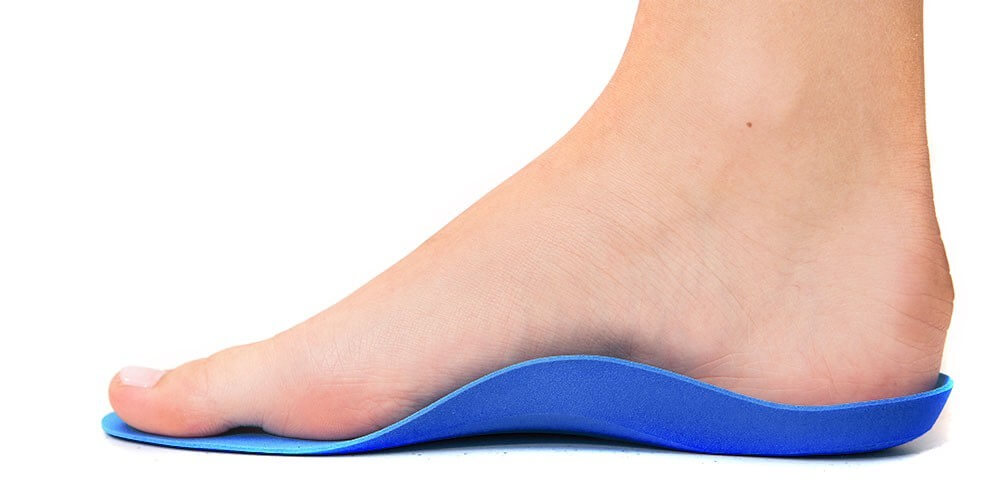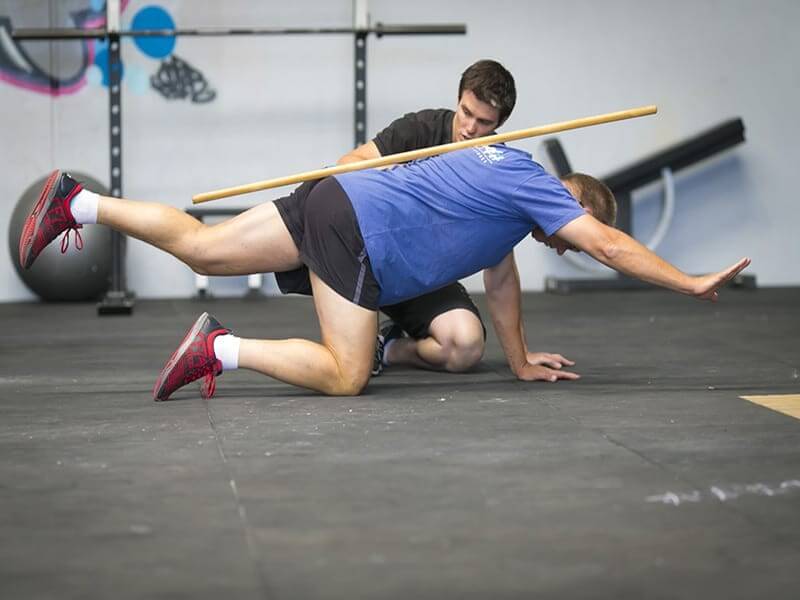

General Information on Shin Splints:
Shin Splints / Medial tibial stress syndrome (MTSS) is one of the most common complaints of the lower leg in the athletic population. Incidences between 4% and 35% have been reported in both military and athletic studies. Different mechanisms have been proposed for shin splints / MTSS. Recent evidence suggests that shin splints / MTSS are related to mechanical overloading of the bone and resulting in decreased bone density.
In the treatment of shin splints / MTSS a therapy in which bone cells are upregulated would possibly enhance bone density and thus decrease symptoms. Studies that tried to enhance the number of bone cells in the treatment of stress fractures and the non-union of fractures provided evidence for the plausibility of this theory. In those studies extracorporeal shockwave therapy (ESWT) was used to stimulate the bone through micro trauma.
I have attached a recent study which shows the effectiveness of Shockwave Therapy for shin splints / MTSS treatment.
Shockwave treatment for medial tibial stress syndrome in athletes; a prospective controlled study (2011)
M H Moen, 1 S Rayer, 2 M Schipper, 2 S Schmikli, 1 A Weir, 3 J L Tol, 3 F J G Back
Abstract:
Objective The purpose of this study was to describe the results of two treatment regimens for medial tibial stress syndrome (MTSS); a graded running programme and the same running programme with additional shockwave therapy (extracorporeal shockwave therapy; ESWT).
Design:
A prospective observational controlled trial. Setting Two different sports medicine departments. Participants 42 athletes with MTSS were included.
Intervention:
Patients from one hospital were treated with a graded running programme, while patients from the other hospital were treated with the same graded running programme and focused ESWT (five sessions in 9 weeks).
Main Outcome:
Measures Time to full recovery (the endpoint was being able to run 18 min consecutively without pain at a fixed intensity).
Results:
The time to full recovery was significantly faster in the ESWT group compared with the patients who only performed a graded running programme, respectively 59.7±25.8 and 91.6±43.0 days (p=0.008).
Conclusions:
This prospective observational study showed that MTSS patients may benefit from ESWT in addition to a graded running programme. ESWT as an additional treatment warrants further investigation in a prospective controlled trial with the addition of randomisation and double blinding.
References:
1. Clanton TO, Solcher BW. Chronic leg pain in the athlete. Clin Sports Med 1994 ; 13 : 743 – 59 .
2. Andrish JT, Bergfeld JA, Walheim J. A prospective study on the management of shin splints. J Bone Joint Surg Am 1974 ; 56 : 1697 – 700 .
3. Bennett JE, Reinking MF, Pluemer B, et al. Factors contributing to the development of medial tibial stress syndrome in high school runners. J Orthop Sports Phys Ther 2001 ; 31 : 504 – 10 .
4. Yates B, White S. The incidence and risk factors in the development of medial tibial stress syndrome among naval recruits. Am J Sports Med 2004 ; 32 : 772 – 80 .
5. Detmer DE. Chronic shin splints. Classifi cation and management of medial tibial stress syndrome. Sports Med 1986 ; 3 : 436 – 46 .
6. Kortebein PM, Kaufman KR, Basford JR, et al. Medial tibial stress syndrome. Med Sci Sports Exerc 2000 ; 32 : S27 – 33 .
7. Saxena A, O’Brien T, Bunce D. Anatomic dissection of the tibialis posterior muscle and its correlation to medial tibial stress syndrome. J Foot Surg 1990 ; 29 : 105 – 8 .
8. Beck BR. Tibial stress injuries. An aetiological review for the purposes of guiding management. Sports Med 1998 ; 26 : 265 – 79 .
9. Moen MH, Tol JL, Weir A, et al. Medial tibial stress syndrome: a critical review. Sports Med 2009 ; 39 : 523 – 46 .
10. Gaeta M, Minutoli F, Vinci S, et al. High-resolution CT grading of tibial stress reactions in distance runners. AJR Am J Roentgenol 2006 ; 187 : 789 – 93 .
11. Magnusson HI, Westlin NE, Nyqvist F, et al. Abnormally decreased regional bone density in athletes with medial tibial stress syndrome. Am J Sports Med 2001 ; 29 : 712 – 15 .
12. Magnusson HI, Ahlborg HG, Karlsson C, et al. Low regional tibial bone density in athletes with medial tibial stress syndrome normalizes after recovery from symptoms. Am J Sports Med 2003 ; 31 : 596 – 600 .
13. Taki M, Iwata O, Shiono M, et al. Extracorporeal shock wave therapy for resistant stress fracture in athletes: a report of 5 cases. Am J Sports Med 2007 ; 35 : 1188 – 92 .
14. Wang L, Qin L, Lu HB, et al. Extracorporeal shock wave therapy in treatment of delayed bone-tendon healing. Am J Sports Med 2008 ; 36 : 340 – 7 .
15. World Medical Association Declaration of Helsinki 2008 . 59th General Medical Assembly. Seoul: World Medical Association Declaration of Helsinki, 2008.
16. Moen MH, Bongers T, Bakker EW, et al. The additional value of a pneumatic leg brace in the treatment of recruits with medial tibial stress syndrome; a randomized study. J R Army Med Corps 2010 ; 156 : 236 – 40 .
17. Likert R . A technique for the measurement of attitudes. Arch Psychol 1934; 22 :1–55.
18. Rompe JD, Cacchio A, Furia JP, et al. Low-energy extracorporeal shock wave therapy as a treatment for medial tibial stress syndrome. Am J Sports Med 2010 ; 38 : 125 – 32 .
19. Nissen LR, Astvad K, Madsen L. [Low-energy laser therapy in medial tibial stress syndrome]. Ugeskr Laeg 1994 ; 156 : 7329 – 31 .
20. Johnston E, Flynn T, Bean M, et al. A randomized controlled trial of a leg orthosis versus traditional treatment for soldiers with shin splints: a pilot study. Mil Med 2006 ; 171 : 40 – 4 .
21. Da Costa Gómez TM, Radtke CL, Kalscheur VL, et al. Effect of focused and radial extracorporeal shock wave therapy on equine bone microdamage. Vet Surg 2004 ; 33 : 49 – 55 .
22. Waldorff EI, Christenson KB, Cooney LA, et al. Microdamage repair and remodeling requires mechanical loading. J Bone Miner Res 2010 ; 25 : 734 – 45 .
23. Moen MH, Bongers T, Bakker EW, et al. Risk factors and prognostic indicators for medial tibial stress syndrome. Scand J Med Sci Sports 2010 ; Jun 18. [Epub ahead of print].
24. Elster EA, Stojadinovic A, Forsberg J, et al. Extracorporeal shock wave therapy for nonunion of the tibia. J Orthop Trauma 2010 ; 24 : 133 – 41 .
25. Furia JP, Juliano PJ, Wade AM, et al. Shock wave therapy compared with intramedullary screw fi xation for nonunion of proximal fi fth metatarsal metaphyseal–diaphyseal fractures. J Bone Joint Surg Am 2010 ; 92 : 846 – 54 .
26. Martini L, Giavaresi G, Fini M, et al. Effect of extracorporeal shock wave therapy on osteoblastlike cells. Clin Orthop Relat Res 2003 ; 413 : 269 – 80 .
27. Wang FS, Wang CJ, Chen YJ, et al. Ras induction of superoxide activates ERKdependent angiogenic transcription factor HIF-1alpha and VEGF-A expression in shock wave-stimulated osteoblasts. J Biol Chem 2004 ; 279 : 10331 – 7 .
28. Tamma R, dell’Endice S, Notarnicola A, et al. Extracorporeal shock waves stimulate osteoblast activities. Ultrasound Med Biol 2009 ; 35 : 2093 – 100 .


